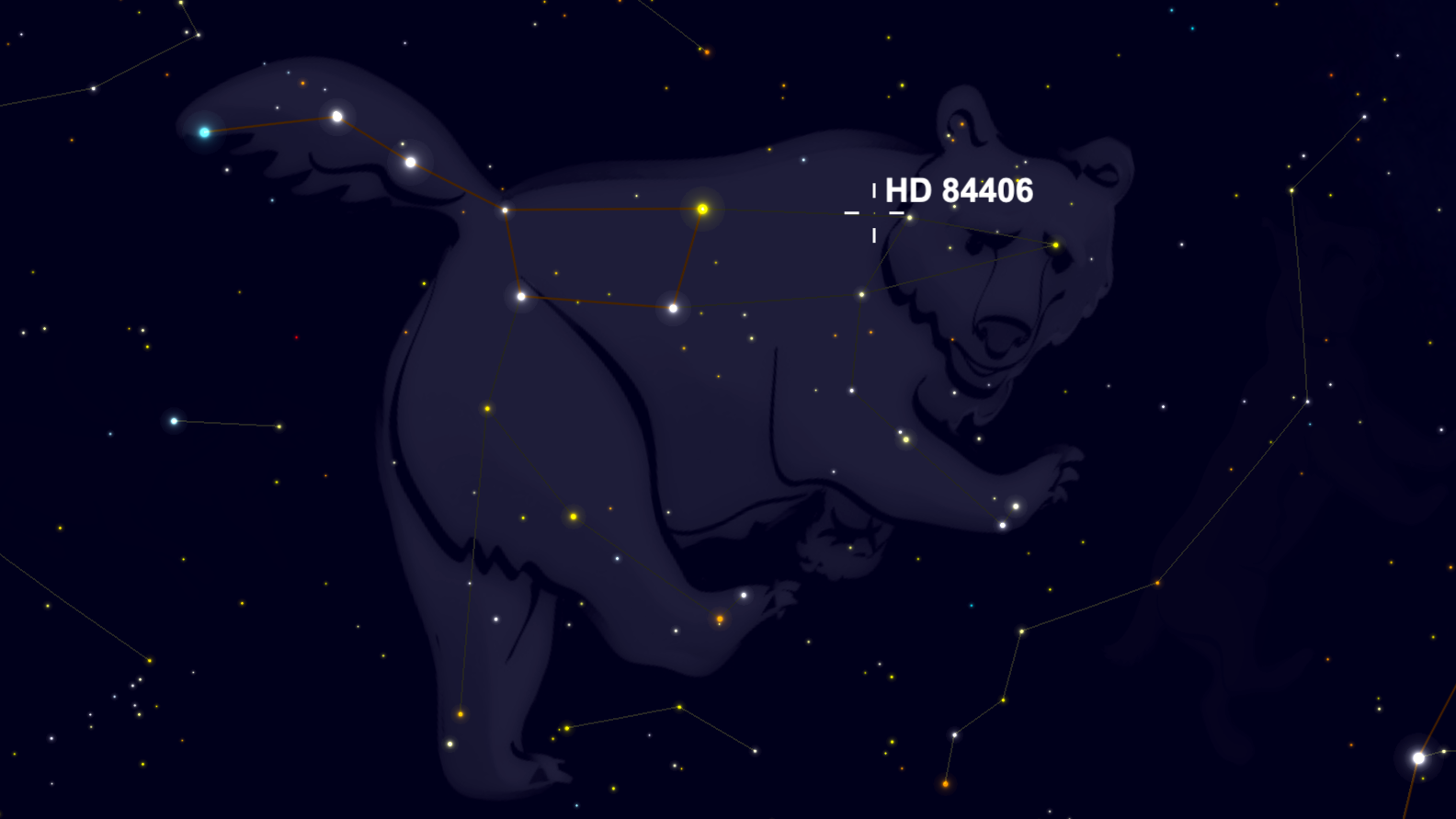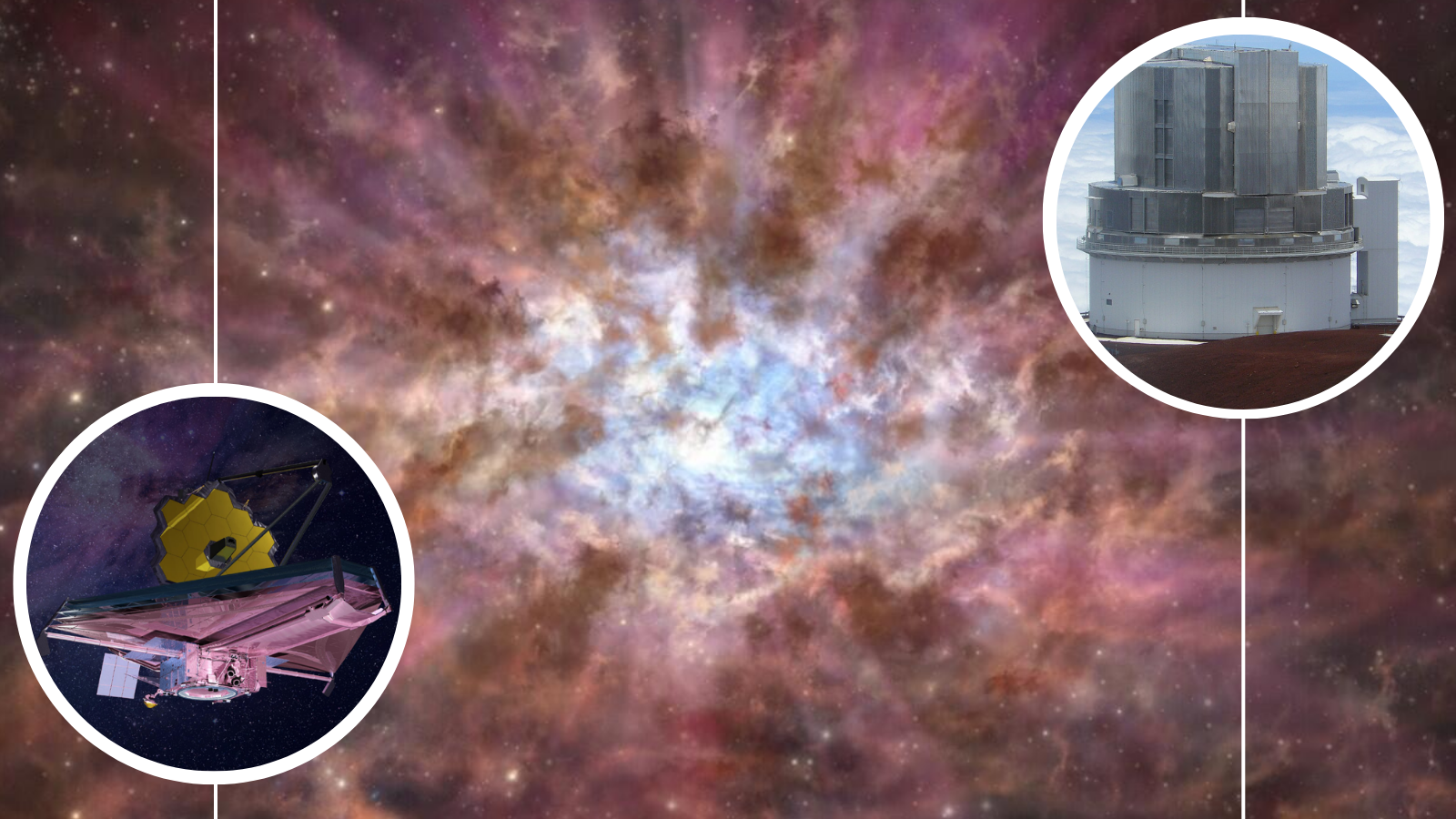The James Webb Space Telescope's 1st target star is in the Big Dipper. Here's where to see it.
The Big Dipper is part of the Ursa Major constellation.

The James Webb Space Telescope is setting its eyes towards the Big Dipper.
Although the spacecraft is still months away from beginning its official scientific observations, one particularly bright star named HD 84406 will soon be the object of JWST's attention.
"Star light, star bright … the first star Webb will see is HD 84406, a sun-like star about 260 light years away," NASA officials tweeted on Friday (Jan. 28) via JWST's official Twitter account.
HD 84406 is located in the constellation Ursa Major, which means "Big Bear" in Latin. The Big Dipper asterism (or star pattern) is actually part of this constellation, and it's the tail of this furry beast. The star has a visual magnitude of about 6.9, which is too dim to see with the naked eye. To see the star, you'll need a telescope or high-power binoculars. Here's our guide for the best telescopes for 2022, and our guide for the best binoculars may help you find the right pair to hunt Webb's star.
Related: How the James Webb Space Telescope works in pictures

Now that JWST has reached its final destination in space, the mission team is getting the next-generation space telescope prepped for observations. A bright point like HD 84406 provides a helpful target by which the team can align JWST's honeycomb-shaped mirrors and to start gathering engineering data, according to the tweet.
This star will play an important role for this specific purpose, but it won't be studied by the observatory once it officially begins its science projects.
Breaking space news, the latest updates on rocket launches, skywatching events and more!
"HD 84406 will be too bright to study with Webb once the telescope starts to come into focus. But for now, it is the perfect target to begin our search for photons, a search that will lead us to the distant universe," according to a NASA blog post published on Thursday (Jan. 27) written by Jonathan Gardner, Webb deputy senior project scientist from NASA's Goddard Space Flight Center, and Alexandra Lockwood, project scientist for Webb science communications at Space Telescope Science Institute.
In addition to JWST placing itself in its observational perch, this week has marked another important development for JWST. According to the blog post, the team has also turned on JWST's High-Gain Antenna and it can now downlink observations via the Deep Space Network's Ka radio band, a channel that "provides a much higher data rate" to download science images and data for astronomers to analyze.
Follow Doris Elin Urrutia on Twitter @salazar_elin. Follow us on Twitter @Spacedotcom and on Facebook.
Join our Space Forums to keep talking space on the latest missions, night sky and more! And if you have a news tip, correction or comment, let us know at: community@space.com.

Doris is a science journalist and Space.com contributor. She received a B.A. in Sociology and Communications at Fordham University in New York City. Her first work was published in collaboration with London Mining Network, where her love of science writing was born. Her passion for astronomy started as a kid when she helped her sister build a model solar system in the Bronx. She got her first shot at astronomy writing as a Space.com editorial intern and continues to write about all things cosmic for the website. Doris has also written about microscopic plant life for Scientific American’s website and about whale calls for their print magazine. She has also written about ancient humans for Inverse, with stories ranging from how to recreate Pompeii’s cuisine to how to map the Polynesian expansion through genomics. She currently shares her home with two rabbits. Follow her on twitter at @salazar_elin.
